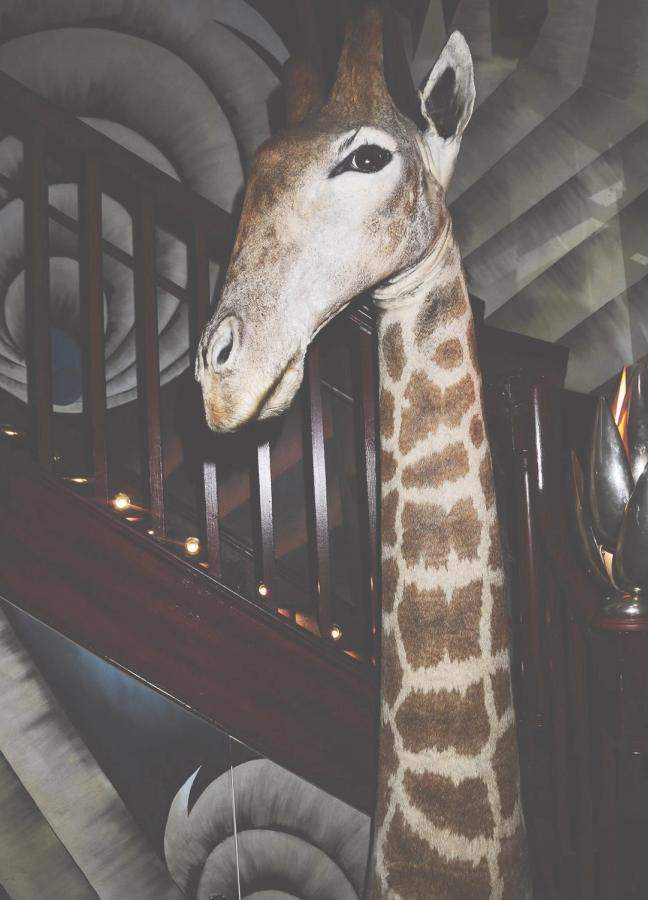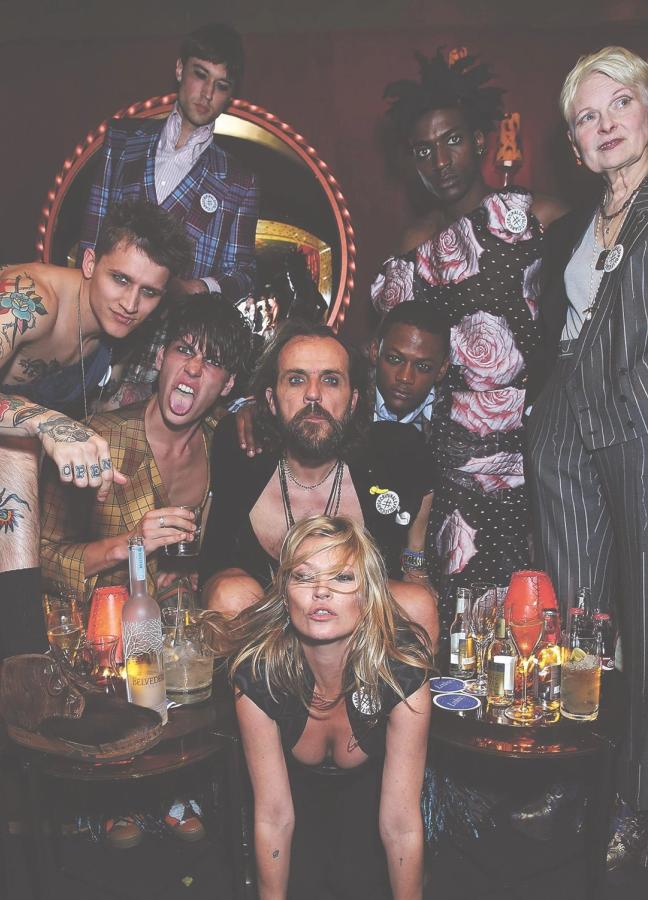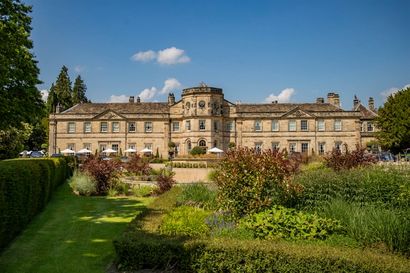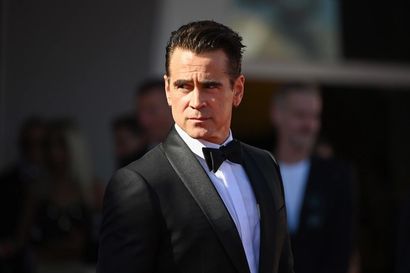If the cost-of-living crisis has reached 5 Hertford Street, the club is doing a good job of pretending otherwise. On an autumnal weekday night in October, while the leaves in nearby Green Park are just browning and falling, ‘Five Hertford’, as it tends to be known, is jumping. There is a costume party at Loulou’s downstairs. Men are in wigs; women in racing boiler-suits and sunglasses. The weather is not yet too cold for smoking outside, depending on your level of undress, but it will be soon.
Upstairs, the rambling rooms of the main club — which turned ten over the summer — swirl with the usual mix of hedge-funders aristocrats, heirs and heiresses, with a smattering of investment bankers and mysterious young women thrown in for good measure. They are drinking lots, not eating much and making plenty of connections.
Napoleon Bonaparte is in. Or rather, Jean-Christophe, Prince Napoléon, the great-great-great-grand-nephew of the original and the disputed heir to the French throne. Lord (Zac) Goldsmith is in, too, going up and down the stairs, looking perfectly busy. In the entrance hallway, near the discreet front desk where visitors sign in, the owner, Robin Birley, Goldsmith’s half-brother, is presiding over things with a patrician gaze. Phones are forbidden; jackets are compulsory.
So, this is the “Brexit sex dungeon”, as one habitué famously described the place — though upstairs, in a rambling attic with acres of printed wallpaper and chintzy fabric and large soft furnishings, it feels more like a particularly chic version of Uncle Monty’s house in Withnail & I. Throughout it all there lingers a certain rare and hard-to-define quality — a mixture of the buzzy and the oddly calm — which you might appreciate or view with suspicion, depending on your perspective. Perhaps because there are so many cushions and thick carpets here, it is strangely quiet. You feel as if you could say whatever you wanted within these walls and it would barely reach across the table, let alone escape the club’s atmosphere. Which is just how its members like it.
“The main reason everyone is there is the networking,” says one member. “If you work for a huge fund you need go nowhere else to find your next deal or husband. It converts business. People who aren’t members like being taken there, possibly because they’ve read in the Telegraph about Liz Truss being there. It’s a largely subterranean warren of bars where it never gets light and people want to drink, party, be seen and not be seen. Something about the mix of people doing that does create something raucous and different to anywhere else in London. It works.”
“Truss and her team had a great sense of mischief — with a ‘work hard, play hard’ ethos”
Over ten years, 5 Hertford Street has patiently built a reputation for being the after-hours epicentre of the British ruling classes. In that time, the politics of some of its high-profile Conservative members has enjoyed a terrific run of success. “5 Hertford Street is a place where Tories feel safe, where they can relax and be assured to be among their own,” says Sebastian Payne, Whitehall editor for the Financial Times. “It is discreet and exclusive, with an overwhelming sense of fun. It’s no surprise that it became the favoured haunt for Team Liz.”
Culturally, it remains a quiet, calm bastion of soft power — the aristocratic father to a lineage of dubious knock-offs and imitators; the club all other clubs want to be when they grow up; the originator of country house maximalism and chintzy fun. As the club moves into its second decade, however, there are signs that the political centre of gravity may be moving on. And with it comes the risk that 5 Hertford Street’s political influence will wane. Boris Johnson and Liz Truss, the 5 Hertford Street politicians par excellence, have both been Prime Minister, with mixed results. Rishi Sunak, whose vices extend to the occasional full-fat Coca-Cola, is an altogether more sober politician than either of his predecessors.
“Truss and her team had a great sense of mischief — with a ‘work hard, play hard’ ethos,” says Payne. “Rishi Sunak is more focused on serious policy delivery, so I can’t imagine they will be hitting up Loulou’s dance floor.”
For most of the country, the summer of 2012 brought with it a spirit of unity. It was Mo Farah and Jessica Ennis and Mr Bean at the opening ceremony. Yet in June of that year, in this corner of Mayfair, Birley quietly opened the door of his new club. The rest of the population might have been enjoying an unusual feeling of togetherness, but he was hoping to put an elegant moat around a miniscule fraction of its elites. The launch party, attended by Kate Moss and Mick Jagger, set out his stall.
Tucked away on a quiet road between Hyde Park Corner and Shepherd’s Market, the club’s location was perfect for a venue that would sit at the intersection between hedge fund money and old Belgravia power. Parliament is a mile away; Buckingham Palace less than 800 metres.

Heads of state: At Loulou’s, the nightclub downstairs at Hertford Street, power-brokers and politicians make deals over Abba and martinis. Photo by Chris Jackson/Getty Images.
For Birley, it was the chance to step out from the shadow of his famous family. He was born into hospitality royalty. His father, Mark, was a giant of the London club scene. In 1963 he founded Annabel’s in Berkeley Square, named for his wife, Robin’s mother. The club was situated in the basement of the Clermont Club, owned by the Aspinalls family. Annabel’s became a centre of London society, and was the only club the late Queen Elizabeth ever went to, on a visit in 2003. Birley went on to open Harry’s Bar and the Bath & Racquets Club, as well as Mark’s Club. After Mark died in 2007, the whole group was sold to Richard Caring’s Caprice Holdings for £95 million.
Robin had previously run a successful sandwich business, but hadn’t had a nightclub of his own. He raised £30m and found a run-down building around the corner on Hertford Street, and hired the Turkish-born fashion designer Rifat Ozbek to do it up. The upper floors are more like a traditional gentleman’s club, with plenty of small rooms and areas for discreet conversations, while the basement is Loulou’s — a formidable nightclub-nightclub.
“To understand 5 Hertford Street you have to understand Mark Birley’s clubs,” says Seth Alexander Thevoz, the author of Behind Closed Doors: The Secret Life of London Private Members’ Clubs. “He founded a whole lot of clubs not so much modelled after the traditional Pall Mall clubs, but more modelled after the kind of clubs you see in the James Bond books. The idea was meant to show you James Bond didn’t hang around respectable clubs, but around gambling clubs that were a little bit louche. Quite socially connected, but a little bit daring.
“Robin had grown up steeped in clubs. New clubs fail all the time, but Mark’s record was good: none of his clubs went under. I think Robin learnt quite a bit. He thought, ‘If I can’t inherit my father’s, I’ll set up my own.’ 5 Hertford Street was the test laboratory for that, and it’s been very successful, on its own terms.”
From day one, the club has appealed to a specific type of clientele. While Annabel’s, in its current incarnation, has become increasingly international and flashy, 5 Hertford Street has had a more understated English flavour, rooted, perhaps, in its accompanying political ethos.
“It’s very important for a club to have a theme and a feel and an atmosphere,” Thevoz says. “It almost doesn’t matter what that is. When you have a theme you have a core audience, and an element of loyalty that builds up, because it becomes about more than paying a subscription. It becomes about what you’re inspired by and what your social circle is. We can talk about luxury, but the feel is very important. They’ve carved that out very effectively.
“Robin has identified very effectively who he wants to be a member of this club,” Thevoz adds. “If you go to any new club they give you the same patter about being exclusive, but in truth there’s very little to distinguish one from another. The culture of 5 Hertford Street is that it’s a libertarian circle of the Conservative Party. It was Brexit before Brexit. People like Nigel Farage and Arron Banks. It wasn’t the conservative establishment like you’d see at the Carlton Club. It was edgy. This is where you’d see Boris Johnson and Priti Patel. In some ways it mirrors Annabel’s and the Clermont back in the 1960s. They were full of Eurosceptic businessmen, too.” It was James Goldsmith, Zac’s billionaire father and a pillar of the original Clermont Club, who founded the short-lived Referendum Party, a precursor in some ways to UKIP.
The core political clientele was established soon after 5 Hertford Street’s formation. Nigel Farage, Arron Banks and Boris Johnson have been there since day one. The existing political and social connections helped, as did the club’s reported tactic of deploying free memberships to key clients. Michael Gove and Boris Johnson both declared non-cash donations-in-kind from Birley that happened to bear a distinct similarity to the annual membership fee, which today is around £2,000 per year. Johnson’s wife, Carrie, was said to have loved the club so much that she based her infamous Downing Street refurbishment on its maximalist interiors. On one night last December, David Cameron, Prince William and Nigel Farage were all spotted there in just a few short hours.
Yet if politics has kept 5 Hertford Street in the papers, it is the core membership, dominated by hedge funders, that keeps the expensive lights on. Members agree that the staff tend to be very good: both competent and discreet. “You can have a work breakfast or dinner there knowing the beans aren’t about to be spilled by a sharp-eared member of staff or the public,” says one. “At the same time, it is also one of the worst places to have a discreet meeting in fund finance, because everyone else does too.”
“Mayfair has changed so much in the past decade,” Thevoz says. “There’s the odd oligarch, but mostly it’s hedge funds. It’s not traditional financial services. It’s people who go against the grain, and bet against the markets a lot of the time.”
“Hertford Street sends rich people weak at the knees — a place of power, celebrity and wealth”
One of the members I speak to agrees. “It hovers towards the Euro hedge-fund set, despite the strict membership sifting to try and prevent an Annabel’s-style build up of this. The membership is heavily male-dominated.”
Inevitably this combination of phoneless discretion, a nightclub with people dancing in it, and sleek financial players who are unfussed about fame, or at least able to pretend to be, has proved irresistible to celebrities. Cara Delevingne, Colin Firth, Princesses Eugenie and Beatrice, even the footballer Neymar: all have popped down to Loulou’s. Whatever else the Carlton Club may be, it is not somewhere you are likely to bump into the talismanic striker of the Brazilian football team. Charlie Baker, editor of The Fence, a satirical magazine that — among other things— is fond of skewering this particular sliver of the London elite, agrees that 5HS has a peculiar alchemy.
“It has this ability to send rich people weak at the knees,” he says. “It sort of flatters all of their vanities. There’s lots of English people there. They gave lots of memberships to pretty English girls in their early twenties, so they go there. Young English people going there makes other rich European people want to go there. What’s amazing about it is that it’s a club which charges hotel prices. How they’ve managed to do that is interesting. It’s a place of power, celebrity and wealth. All those vortexes are there.”
Whatever the initial vision, 5 Hertford Street’s strategy has evidently worked. The club itself has remained popular since it opened without ever sacrificing exclusivity or suffering the slow dilution in membership that critics see in Soho House. Today the waiting list is so long, Thevoz says, that it has closed. To even join it, you must first become a member of Birley’s newer club, Oswald’s, while original members of 5 Hertford Street also gain entry there.
In the summer of 2019 there was a brief flurry of activity, with demonstrations outside 5 Hertford Street in protest at the low wages of their kitchen porters, which were resolved with a pay increase. That aside, the day-to-day workings of the club have remained largely in the background, leaving its members free to get on with the serious business of scheming.

Kate Moss, Andreas Kronthaler, Vivienne Westwood and models at 5 Hertford Street, June 2015. Photo by Darren Gerrish/WireImage.
Practically everything the 5 Hertford Street set seems to have wanted, politically speaking, has come to pass. First Brexit. Then Boris Johnson’s ascension to Prime Minister. When the wheels started to come off his government earlier this year, it was at 5 Hertford Street that his plotters were said to be strategising his demise.
Then came Liz Truss, the ultimate 5 Hertford Street politician, in some ways — its own political Icarus. This was a woman who insisted her ‘Fizz with Liz’ drinks parties were held here, as were her ‘Biz with Liz’ schmoozathons; who overruled a suggestion from the Treasury that spending £3,000 on lunch with President Biden here might be a shoddy look at a time of widespread economic crisis. Afterwards, she was prone to requesting ABBA from the DJ at Loulou’s. Yet her economic vision, which must have seemed so appealing when she was holding a champagne flute and lit by flickering fireplaces, failed to survive contact with reality.
The “Brexit sex dungeon” line came from an anonymous member and “notable wit” quoted in an Evening Standard feature in 2019. It downplays how culturally and politically important the club has been. The men and women inside 5 Hertford Street may have been having fun, but they were also making big decisions. But it seems somehow unlikely that the club will be as central to British political life for its next ten years as it has been for its first decade.
The truth is that in recent years this place has been less like a dungeon and more like the castle’s keep. This may dismay a few chuntering old boys, but it certainly won’t harm the club’s enduring social cachet. (After all, there’s nothing like party politics to sour an actual party.) The fun’s certainly in full swing for the various well-heeled, well-oiled attendees I pass on my way out. The music might be slowing down, but at 5 Hertford Street they’re still dancing.
Want to schmooze with London’s Great and Good? These are the best members’ clubs in London…
Become a Gentleman’s Journal member. Find out more here.

Become a Gentleman’s Journal Member?
Like the Gentleman’s Journal? Why not join the Clubhouse, a special kind of private club where members receive offers and experiences from hand-picked, premium brands. You will also receive invites to exclusive events, the quarterly print magazine delivered directly to your door and your own membership card.


